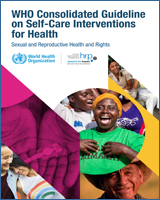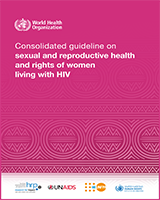-
 Disease Control Priorities, 4th edition (DCP4): Country-Led Priority-Setting for Health, Volume 1
by
Building on the foundation of the three previous editions of Disease Control Priorities (DCP), published from 1993 through 2019, this new fourth edition, DCP4, uses a country-specific approach based on collaboration to summarize, produce, and help translate economic evidence into better priority setting and capacity strengthening for universal health coverage, public health functions, pandemic preparedness and response, and intersectoral and international action for health.Volume 1--Country-Led Priority Setting for Health--presents the overall lessons learned in defining and implementing essential health service packages (EHSPs). The volume is divided into three parts that highlight successes and failures and the way forward.* Part 1 focuses on the experiences of selected countries in developing their EHSPs, including Afghanistan, Ethiopia, the Arab Republic of Iran, Malawi, Pakistan, Somalia, and Zanzibar; Nigeria's Lancet Commission; India's Ayushman Bharat Health System Reforms; the success and failures of Colombia's health benefit package; and the evolution of priority setting in Mexico.* Part 2 presents cross-cutting insights on the development and implementation of EHSPs based on the experiences of Afghanistan, Ethiopia, Pakistan, Somalia, Sudan, and Zanzibar. It includes key steps and parameters for successful development and implementation; lessons learned related to costing and financing; monitoring and evaluation; and the role of the private sector in the development and delivery of EHSPs.* Part 3 presents three case studies: cross-national experiences on child health and development during school age and adolescence (the next 7,000 days), as well as the implementation of both the DCP3 essential noncommunicable diseases and surgery packages.
ISBN: 9781464821059Publication Date: 2025
Disease Control Priorities, 4th edition (DCP4): Country-Led Priority-Setting for Health, Volume 1
by
Building on the foundation of the three previous editions of Disease Control Priorities (DCP), published from 1993 through 2019, this new fourth edition, DCP4, uses a country-specific approach based on collaboration to summarize, produce, and help translate economic evidence into better priority setting and capacity strengthening for universal health coverage, public health functions, pandemic preparedness and response, and intersectoral and international action for health.Volume 1--Country-Led Priority Setting for Health--presents the overall lessons learned in defining and implementing essential health service packages (EHSPs). The volume is divided into three parts that highlight successes and failures and the way forward.* Part 1 focuses on the experiences of selected countries in developing their EHSPs, including Afghanistan, Ethiopia, the Arab Republic of Iran, Malawi, Pakistan, Somalia, and Zanzibar; Nigeria's Lancet Commission; India's Ayushman Bharat Health System Reforms; the success and failures of Colombia's health benefit package; and the evolution of priority setting in Mexico.* Part 2 presents cross-cutting insights on the development and implementation of EHSPs based on the experiences of Afghanistan, Ethiopia, Pakistan, Somalia, Sudan, and Zanzibar. It includes key steps and parameters for successful development and implementation; lessons learned related to costing and financing; monitoring and evaluation; and the role of the private sector in the development and delivery of EHSPs.* Part 3 presents three case studies: cross-national experiences on child health and development during school age and adolescence (the next 7,000 days), as well as the implementation of both the DCP3 essential noncommunicable diseases and surgery packages.
ISBN: 9781464821059Publication Date: 2025 -
 Infertility prevalence estimates, 1990–2021
by
The objective of this report is to provide estimates of the global and regional prevalence of infertility by analyzing all relevant and representative studies from 1990 to 2021, taking into account different study approaches. This report also provides insight into how the estimation of infertility prevalence can be improved to obtain more reliable and actionable data. These estimates improve the understanding of the burden of infertility, and provide a basis for appropriate policies and services to achieve universal access to fertility care for all.
Publication Date: 2023
Infertility prevalence estimates, 1990–2021
by
The objective of this report is to provide estimates of the global and regional prevalence of infertility by analyzing all relevant and representative studies from 1990 to 2021, taking into account different study approaches. This report also provides insight into how the estimation of infertility prevalence can be improved to obtain more reliable and actionable data. These estimates improve the understanding of the burden of infertility, and provide a basis for appropriate policies and services to achieve universal access to fertility care for all.
Publication Date: 2023 -
Sex Work, Health, and Human Rights by This open access book provides a comprehensive overview of the health inequities and human rights issues faced by sex workers globally across diverse contexts, and outlines evidence-based strategies and best practices.
ISBN: 9783030641702Publication Date: 2021 -
The Palgrave Handbook of Critical Menstrual Studies by "This open access handbook, the first of its kind, provides a comprehensive and carefully curated multidisciplinary and genre-spanning view of the state of the field of Critical Menstruation Studies, opening up new directions in research and advocacy."
ISBN: 9789811506130Publication Date: 2020 -
Improving Health Care in Low- and Middle-Income Countries by "This open access book is a collection of 12 case studies capturing experience improving health care and outcomes in low- and middle-income countries."
ISBN: 9783030431112Publication Date: 2020 -
Sepsis Management in Resource-Limited Settings by "This book is open access under a CC BY 4.0 license. It constitutes a source of knowledge and guidance for all healthcare workers who care for patients with sepsis and septic shock in resource-limited settings."
ISBN: 9783030031428Publication Date: 2019 -
Development, Sexual Cultural Practices and HIV/AIDS in Africa by This open access book introduces the theoretical frameworks and academic debates concerning sexual cultural practices and HIV/AIDS in Africa. It shows how these frameworks have been applied in a practical sense in Africa to investigate sexual cultural practices and their link with HIV/AIDS.
ISBN: 9783030041182Publication Date: 2019 -
 WHO Consolidated Guideline on Self-Care Interventions for Health
by
ISBN: 9789241550550Publication Date: 2019
WHO Consolidated Guideline on Self-Care Interventions for Health
by
ISBN: 9789241550550Publication Date: 2019 -
-
 Ultrasound in Obstetrics and gynecology: A Practical Approach
by
Publication Date: 2014
Ultrasound in Obstetrics and gynecology: A Practical Approach
by
Publication Date: 2014 -
-
 A Textbook of Gynecology for Less-Resourced Locations
by
Evidence-based information on low-tech diagnostic and treatment options for common gynecological conditions.
Publication Date: 2012
A Textbook of Gynecology for Less-Resourced Locations
by
Evidence-based information on low-tech diagnostic and treatment options for common gynecological conditions.
Publication Date: 2012 -
Comprehensive Cervical Cancer Control by This publication gives a broad vision of what a comprehensive approach to cervical cancer prevention and control means.
ISBN: 9789241548953Publication Date: 2016 -
The Palgrave Handbook of Critical Menstrual Studies by This open access handbook, the first of its kind, provides a comprehensive and carefully curated multidisciplinary and genre-spanning view of the state of the field of Critical Menstruation Studies, opening up new directions in research and advocacy. It is animated by the central question: '"what new lines of inquiry are possible when we center our attention on menstrual health and politics across the life course?" The chapters--diverse in content, form and perspective--establish Critical Menstruation Studies as a potent lens that reveals, complicates and unpacks inequalities across biological, social, cultural and historical dimensions. This handbook is an unmatched resource for researchers, policy makers, practitioners, and activists new to and already familiar with the field as it rapidly develops and expands.
ISBN: 9789811506130Publication Date: 2020-07-25
Last Updated: Oct 23, 2025 12:19 PM

